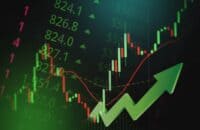 No one should have to tell the US government that it has the highest possible credit rating. It is the government of the world’s largest economy, the world’s most voracious consumers, and its debt, the world’s investment of last resort.
No one should have to tell the US government that it has the highest possible credit rating. It is the government of the world’s largest economy, the world’s most voracious consumers, and its debt, the world’s investment of last resort.
Shudders went though the global markets a week ago when S&P took its outlook on UK debt down from “stable” to “neutral.” As a reward for being better off than the UK, Moody’s, the other large credit rating agency, affirmed its rating on US debt at “AAA”. Pessimistic analysts had been voicing concerns about whether the Treasury could maintain this rating with the national debt rising each day due to government spending and an evaporation of IRS receipts.
The two credit ratings agencies gave mortgage-backed securities high marks before that market fell apart. Their opinion of the derivatives was at least partially to blame for the buying binge that put so much of the nearly worthless paper on bank balance sheets. As the value of the securities dissolved, so did the reputations of S&P (MHP) and Moody’s (MCO). Both companies are still facing government scrutiny.
Credit ratings are affected, of course, by the fallibility of the judgments of the people who make them and the pace at which the risk created by investment instruments changes. Economists believe that interest rates on US Treasuries will rise sharply over the next several months as the government sells bonds to finance the budget shortfall. Their theory is based on the idea that the demand for American debt is not insatiable, and that the largest acquirers of Treasuries, particularly the Chinese, will eventually pull back the level at which they are willing to support US red ink.
No one knows for certain how much interest rates would have to rise before Treasuries are considered much more risky than they are today. Risk level evaluation is certainly not a science. Interest rates are probably a better barometer than the opinions of a few experts who work with an abacus, slide rule, and an actuarial table.
The “AAA” rating is not what it used to be anyway. GE (GE) has lost its and so has Warren Buffett’s Berkshire Hathaway (BRK). Neither company seems to be the worse off for that. Berkshire Hathaway’s stock is up 20% and GE has risen almost 60% over the last three months. Investors have not been persuaded that the ratings meant anything at all.
The sovereign debt debate is not over. The change in the outlook for UK debt was only the beginning of a heightened analysis that will go on for the rest of the recession and perhaps several quarters more. The ratings agencies will face pressure to change their minds on the UK and perhaps the US if the downturn runs well into next year and the deficits that need to be financed grow by substantially more than current projections.
The debt ratings of several large and relatively successful countries could be downgraded, including American obligations. It won’t matter much, if at all. The Chinese cannot put their money in a shoe box.
Douglas A. McIntyre
Travel Cards Are Getting Too Good To Ignore (sponsored)
Credit card companies are pulling out all the stops, with the issuers are offering insane travel rewards and perks.
We’re talking huge sign-up bonuses, points on every purchase, and benefits like lounge access, travel credits, and free hotel nights. For travelers, these rewards can add up to thousands of dollars in flights, upgrades, and luxury experiences every year.
It’s like getting paid to travel — and it’s available to qualified borrowers who know where to look.
We’ve rounded up some of the best travel credit cards on the market. Click here to see the list. Don’t miss these offers — they won’t be this good forever.
Thank you for reading! Have some feedback for us?
Contact the 24/7 Wall St. editorial team.





